After attending our first ice hockey game at Merseyside’s only ice hockey club, Widnes Wild, we were captivated by the sport.
Our match report of the Wild’s thumping victory over Telford Tigers 2 was our inaugural ice hockey based article, and with more content set to emerge from Widnes’ home at Planet Ice in the future, we decided to complete a beginner’s guide to UK’s biggest indoor sport.
History
Although some experts believe the concept of ice hockey could’ve formed in the UK, the contemporary sport was developed in 1875 in Montreal, Canada.
The Stanley Cup, which later became the NHL, was first awarded in 1893 after amateur leagues began forming in the 1880s.
In the UK, leagues have been in operation since as early as 1903, but it wasn’t until the 1990s when the sport really took off – Manchester Storm, who hold the UK attendance record for a single game (17,245), and Sheffield Steelers attracted fans with their large, American styled arenas.
Attendances fluctuated in the late ’90s after the failure of the ‘Ice Hockey Superleague’, but the UK’s top ice hockey division rebranded as the ‘Elite Ice Hockey League’ in 2003, and the sport’s popularity has been gradually increasing ever since.
Where is ice hockey played?
Unsurprisingly, ice hockey is played on an ice rink – an official rink measures 200 feet by 85 feet.
There is a goal, 4 feet tall and 6 feet wide, at either end of the rink.
The rink is divided into three zones – the defence, neutral and attacking zones each cover roughly a third of the pitch area.
There are five ‘face-off circles’ marked on the rink – one in the centre of the neutral zone, and two in both the attacking and defence zones.
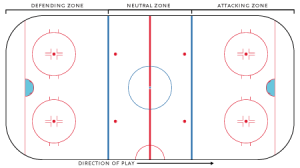
What kit do the players wear?
Each player has their own ice hockey stick and wears a range of protective clothing including:
- Specialised helmet with grilled face-guard.

Players wear heavy padding to protect themselves from the puck, sticks and other players. (Pic by OscartheOtter, under creative commons licence) - Shin, elbow, hip, and shoulder guards.
- Thick gauntlet-type gloves.
- Padded shorts
- Knee pads.
- Ice skates with lower ankle support, reinforced toes, and padded tongues.
Large team-coloured sweaters cover the players’ upper half, while long stockings fit over the knee pads.
What is the aim of the game?
The aim of ice hockey is to push the puck – a circular object made of solid vulcanised rubber measuring 3 inches – by 1 inch – into the opposing teams net by using the ice hockey stick.
When this happens, a point is awarded to the scoring team – whoever scores more points, wins.
If the game ends in a tie, the game progresses to overtime, where the first team to score, wins.
How many players are on a team?
An ice hockey team typically consists of 17 to 22 players, with six of those allowed on the ice at any one time.
The six on the ice usually involves:
- One netminder (goalkeeper)
- Two defencemen
- Three forwards
Players can be substituted at any time in the game, and although the netminder typically remains unchanged, teams may risk swapping their netminder for an outskater (defenceman/forward) in the final seconds of a game they’re losing.
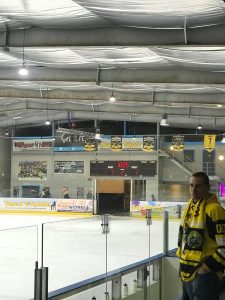
How long are the games?
A game is made up three 20-minute periods, commonly divided by 15-minute intervals – the clock is stopped any time a whistle is blown.
What are the rules?
Play is started by a face-off; this when the referee drops the puck between the sticks of two opposing players.
Officials
The game is officiated by two linesmen, and up to two referees, dependant on the league.
The puck
The puck remains live unless a whistle is blown, or it is hit over the barrier surrounding the rink.
Players can stop the puck with any body part at any time, but it can only be pushed forward by skate or stick.
Offsides
An attacking player may only enter the attacking zone behind the puck. This means an attacker that is outside the attacking zone cannot pass the puck to a teammate that is inside the zone.
This is known as offside and will result in a whistle from the referee and a restart though a face-off.
Penalties
Ice Hockey is a full-contact sport, but there a still some actions that are punishable offences:
- Butt Ending – Jabbing an opponent with the top end of the stick.
- Checking from Behind – Whistled when a player hits an opponent from behind and therefore cannot defend himself.
- Cross Checking – Player makes a check with both hands on the stick.
- Elbowing – When a player uses his elbow to foul an opponent.
- Fighting – When players drop their gloves and throw punches at each other.
- Hooking: When a player impedes the progress of an opponent by ‘hooking’ him with his stick.
- Interference: Interfering with or impeding an opponent who does not have the puck.
- Kneeing: Player fouling an opponent with his knee.
- Roughing: Striking another opponent in a minor altercation that the referee determines is not worthy of a major penalty.
- Slashing: Hitting an opponent with your stick, or ‘slashes’ at him to impede his progress or cause injury.
- Spearing: Stabbing at an opponent with the blade of your stick.
- Tripping: Using the stick (or body) to cause an opposing player to fall down
List of rules credited to ‘The UK Rules’.

Punishments
Penalised players are removed from the ice, and sent to the penalty box for a length of time dependant on the severity of the offence.
- Minor (e.g. Tripping) – 2 minutes, no replacement, cut short if opposing team score.
- Bench (e.g. Team delaying game) – 2 minutes, player is chosen by the coach, cut short if opposing team score.
- Major (e.g. Charging, cross-checking) – 5 minutes, no replacement, remains in effect even if opposing team score.
- Misconduct (e.g. abuse of officials, fighting) – 10 minutes, immediate replacement, two misconduct penalties result in ejection from the game
There are further punishments that can be found here.
For more comprehensive coverage of the rules, visit Ice Hockey UK.
Who are the best teams?
Belfast Giants are the current Elite Ice Hockey League champions, after winning their fifth title last season.
Sheffield Steelers have won the most titles (6) since the league was reformed in 2003, with their last title coming in the 2015-16 season.
Where and when can you watch ice hockey?
Widnes Wild are the only ice hockey club in Merseyside, and play every weekend at Planet Ice in Widnes – games typically faceoff in the evenings.
Widnes play in Division 2 North of the English National Ice Hockey League and have been champions of the division for the last three seasons.

Can anyone play ice hockey?
Widnes run ice hockey classes for beginners of all ages, running on Sunday evenings after matches, so anyone can have a go at one of the most unique, fast-paced and entertaining sports in the UK.
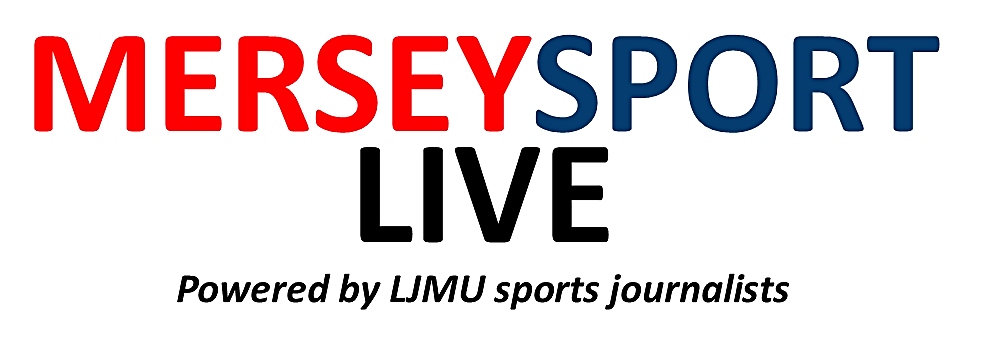

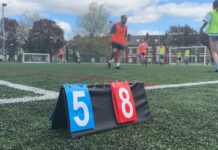



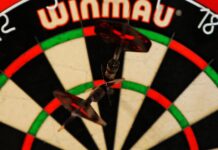
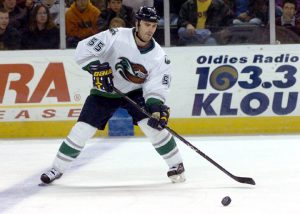



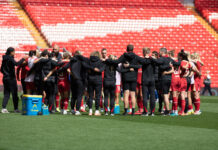
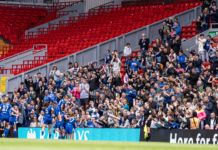






Anybody who gives coverage to UK ice hockey has my great appreciation as there are a lot of people who don’t realise it is even played here!
As regards the history of the game in Britain, the 1930s saw a lot of new rinks being built around the country, there was a professional ice hockey league and the Great Britain national team won the gold medal at the Winter Olympics in Germany in 1936 for the one and only time.
In many people’s opinions, the 1980s and early 90s were actually the boom time for the sport in this country and there was an unprecedented programme of rink building. Many new teams cropped up and the emphasis was on the development of young British players.
Heineken sponsored the resulting British League and there were two top national divisions – Heineken League Premier Division and Heineken League Division 1 – and a regionalised pyramid below. It was all one big competition in those days from top to bottom and in 1988, for example, there were 48 teams across the country all pulling in the same direction. It was possible to start off in the regionalised Division 2 or the English League and Scottish league and win promotion over time right up to the top tier. The Sheffield Steelers started off in the bottom division – as did Cardiff Devils and most of the new teams that launched in that period.
The British Championship play off weekend was held at Wembley Arena every April and they were featured live on BBC Grandstand – with other regular league and play off games shown during the season.
The established league structure fell apart to a certain extent with the breakaway of the Superleague clubs in 1996 and British ice hockey has had a series of separate league competitions at different levels ever since. There are moves at the moment to try and bring the Elite League and EIHA leagues closer together so that they take the game forward as a whole and we await further developments on that.